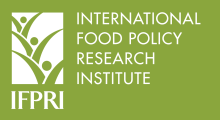Resource information
"This article analyzes the on-site and off-site economic impacts of various sustainable land management (SLM) practices in Kenya. Long-term trial data are used to establish the relationship between SLM practices and maize yield. The analysis of on-site effects focuses on the profitability of maize production at the farm level, while the examined off-site effects include carbon sequestration and siltation from maize farms, which increase the cost of potable water production. The major contribution of this study is the use of long-term experimental data to estimate the impacts of land management practices on crop yield and consider their off-site benefits and costs. The results of this study show that soil and water conservation (SWC) structures reinforced with leguminous plants are more profitable when the plants are used as fodder, as opposed to situations in which only SWC structures are used. SWC structures reinforced with vegetation had lower maintenance costs, whereas those that were not reinforced with leguminous trees were not profitable over the long-term period. These results suggest that complementary and multipurpose SWC practices are more likely to be adopted compared to non-complementary and/or single-purpose practices. Thus, SWC practices should be promoted as a package of complementary technologies. If it is not feasible to promote a mix of complementary enterprises, high value crops are likely to make SLM practices more profitable. In areas where SLM practices are not profitable, promotion of alternative livelihoods is necessary. Adoption of SLM also provides global environmental services worth 10% of the net present value of the SLM practices over the 50-year period addressed in the present study Finally, the results of this analysis suggest that farmers who offer significant environmental services should be compensated for their efforts." -- from Author's Abstract


